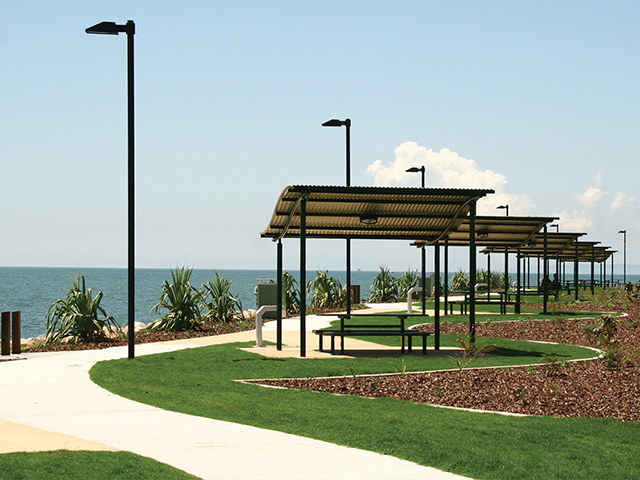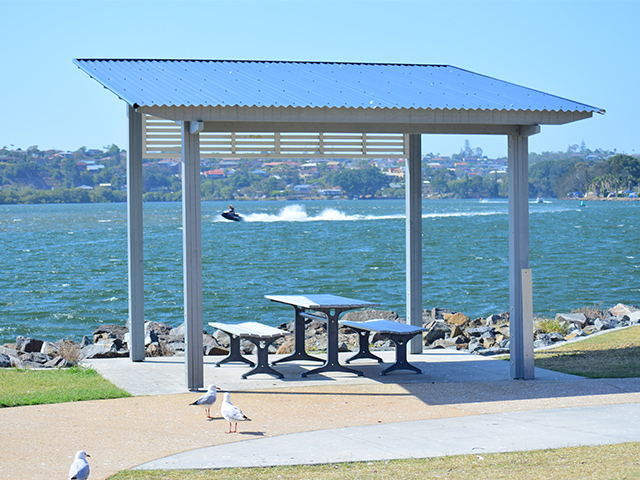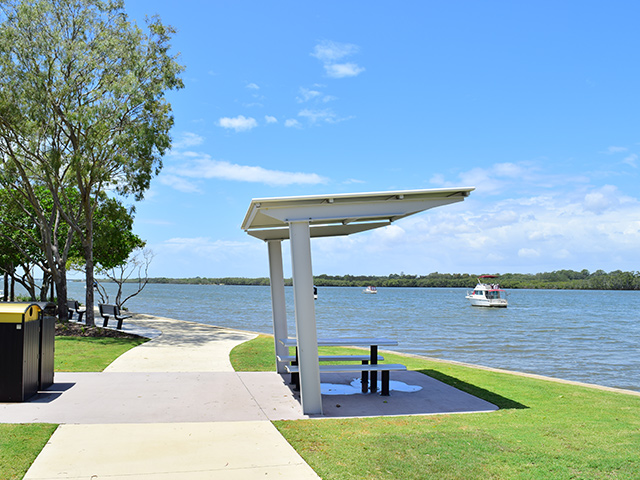SALT AND PREPARATION
19 Dec 2017, 58 views
When constructing outdoor structures on or near seaside areas, considerations must be made to ensure long-term viability and usability. Landmark Products shows us what it takes.

Landmark Products has built hundreds of outdoor structures around Australia located either directly on or near to the beach and is well versed in designing and building for maximum lifespan in these areas. Considering Australia’s 19,000 km coastline, it’s an important skill.
Many products are simply not appropriate for coastal conditions - untreated exposed steel, for example – while some materials have a ‘marine grade’ version. These products have been created specifically to be used on or by the sea, making them suitable for use in coastal conditions. Therefore, when building public infrastructure in ‘high salt’ locations, materials that ensure the longest life-span possible should be used. 
TIMBER
When building near the beach use as much timber as possible - particularly hardwood that has been treated and/or stained. If you are considering decorative cladding or aesthetic features, timber is your best option. The latest composite products, such as Modwood, are another viable ‘wood-look’ option. 
ALUMINIUM
Though not completely infallible, aluminium is one of the metals most resistant to corrosion, due to its ability to spontaneously form a thin but effective oxide layer.
Although without the same structural strength as steel or hardwood, aluminium should be considered as an option wherever possible. It makes a great option for handrails or panelling, for example. 
STEEL
On most occasions, the use of steel within a structure is unavoidable. Unfortunately steel can be extremely susceptible to the elements; however, steps can be taken to increase its lifespan in coastal areas.
All steel used in high-salt environments should be galvanised and epoxy-coated with two-pack or plas-coated.
All Beams should be inground rather than bolt-down. When it comes to anchoring structures to concrete slabs, in-ground is the best option in corrosive environments, as it protects metal brackets and fixtures from the air inside the concrete. Bolt-down inevitably means greater exposure of metal base plates and hardware to the environment. 
STAINLESS STEEL
Stainless steel resists corrosion better than most other metals because of a very thin, colourless passive layer that forms spontaneously on the surface. When the passive layer is breached, it usually forms again spontaneously.
In corrosive environments, the passive layer may be unable to form and some corrosion may take place. Although the stainless steel may look “tea-stained”, it will corrode slower than other metals and will remain serviceable for longer.
In addition, 316-grade stainless steel is recommended for all fixtures (except roof screws). 
ROOFING
There are metal roofing options available that have been specifically developed for salt or salt spray environments. Suppliers recommend which grade of roofing is applicable depending on how far a structure is from the breaking surf or calm marina.
CONCRETE
Concrete too can be adversely affected by salt-rich environments. For this reason, the consistency and strength of concrete, whether for slabs or footings, is determined by a number of variables, including the distance from breaking surf and the size of the footing or slab.
There are also considerations regarding electrical fit-outs, plumbing and various fitting and fixtures when building in high salt areas.
Are you looking to build in a coastal environment? Landmark Products highly-knowledgeable Project Consultants stand ready to consult with you regarding the factors involved in high-salt exposure projects.







